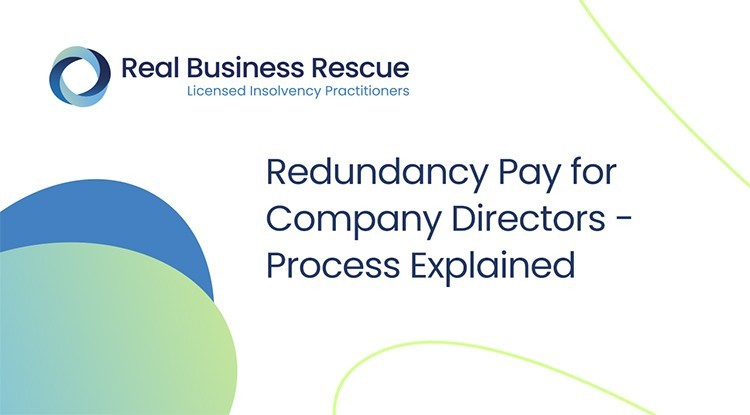Small Business Closing Employee Rights UK: Making Sure Fair Redundancy Pay
Small Business Closing Employee Rights UK: Making Sure Fair Redundancy Pay
Blog Article
Investigating the Interaction Between Business Redundancy and Business Versatility for Future Growth
In the vibrant landscape these days's business globe, the intricate connection between business redundancy and business flexibility becomes a critical element for continual growth and success. Business often deal with the obstacle of striking a delicate equilibrium between preserving a degree of redundancy to reduce threats and fostering adaptability to respond promptly to the ever-evolving market needs. This delicate interaction holds the vital to not only making it through in stormy times but likewise growing in the face of uncertainty. As we discover the multifaceted dimensions of this interplay, appealing understandings into how organizations browse these intricacies to lead the way for future growth wait for.
Value of Company Redundancy
Business redundancy is an essential element that improves business resilience and reduces operational risks. By incorporating redundancy steps within the organizational framework, firms can much better stand up to unpredicted disturbances and changes in business atmosphere. Redundancy serves as a strategic barrier, permitting business to adapt and react properly to unanticipated difficulties without jeopardizing important procedures.
One trick element of the value of firm redundancy is its duty in making sure continuity throughout times of situation. When encountered with unexpected changes or emergencies, redundant systems, resources, or workers can tip in to maintain important functions and prevent prevalent disruptions. This continuity not just safeguards the business's online reputation and consumer count on but likewise minimizes economic losses and operational downtime.

Methods for Business Flexibility

An additional critical strategy is investing in technology and facilities that can support versatility and scalability. Executing electronic devices, automation, and information analytics can enhance procedures, boost effectiveness, and provide beneficial insights for notified decision-making. In addition, producing adaptable business frameworks that allow for fast changes to market characteristics and consumer demands is vital for remaining affordable in a swiftly progressing setting. By proactively determining prospective interruptions and opportunities, companies can proactively adjust and prosper in an ever-changing business landscape.
Harmonizing Redundancy and Versatility
Accomplishing an unified equilibrium between functional redundancy and business adaptability is vital in browsing the intricacies of a dynamic company setting. Striking the right balance in between redundancy and flexibility is a fragile process that requires a deep understanding of the organization's objectives, sector characteristics, and risk tolerance.
To accomplish this balance, business need to conduct regular assessments of their operations to identify areas where redundancy is necessary for threat mitigation and where versatility can drive advancement and growth. Executing flexible structures, cultivating a society of constant knowing and improvement, and encouraging open interaction throughout all degrees of the company are crucial methods to balance redundancy and adaptability effectively. By straightening these 2 important aspects, companies can place themselves for lasting development and success in an ever-changing service landscape.
Study on Adjustment Success
In taking a look at instances of effective business adaptation, it comes to be recommended you read obvious that the interplay in between functional redundancy and flexibility is a specifying aspect in shaping resistant companies. One compelling study is that of Netflix. Originally a DVD rental service, Netflix showed remarkable flexibility by transitioning into a streaming system when digitalization interrupted the industry. By tactically purchasing innovation and content production, Netflix not only endured but grew in a swiftly developing market. An additional standout example is Amazon. Starting as an on-line bookstore, Amazon continually adapted its organization design, increasing into diverse fields such as cloud computing and expert system. This flexibility enabled Amazon to remain ahead of competitors and satisfy altering customer demands. Finally, Adobe gives a noteworthy picture of effective adjustment. The company moved from offering software program licenses to a subscription-based model, ensuring persisting earnings streams and boosted customer interaction. These situation researches emphasize the significance of operational redundancy combined with organizational versatility in cultivating long-term growth and competitiveness.
Structure Durability for Future Growth
Building strength for future growth calls for a calculated alignment of functional processes with market characteristics and emerging patterns. Companies need to adapt to altering environments by promoting a society of versatility, advancement, and continual enhancement.
In addition, promoting solid relationships with stakeholders, such as clients, staff members, providers, and the area, is important for preserving and weathering unpredictabilities depend on and assistance during turbulent times. Efficient interaction and openness play an important function in structure resilience, as they help help with and line up assumptions cooperation in navigating uncertainties.
Moreover, companies require to focus on learning and advancement efforts to upskill staff members and outfit them with the required tools to adapt to altering conditions. By spending in their labor force, companies can improve their versatility and dexterity, eventually reinforcing their durability for sustainable future development.
Verdict

In the her response dynamic landscape of today's organization globe, the elaborate partnership between business redundancy and business flexibility emerges as a vital factor for sustained development and success. Firms discover this info here frequently deal with the obstacle of striking a delicate balance in between keeping a degree of redundancy to reduce dangers and cultivating flexibility to respond swiftly to the ever-evolving market demands.To accomplish this equilibrium, firms require to conduct regular assessments of their operations to determine locations where redundancy is essential for threat reduction and where adaptability can drive development and growth.In final thought, the interplay between business redundancy and business versatility is vital for future development. Building durability with a combination of redundancy and versatility will guarantee that business are prepared for the difficulties of the future.
Report this page